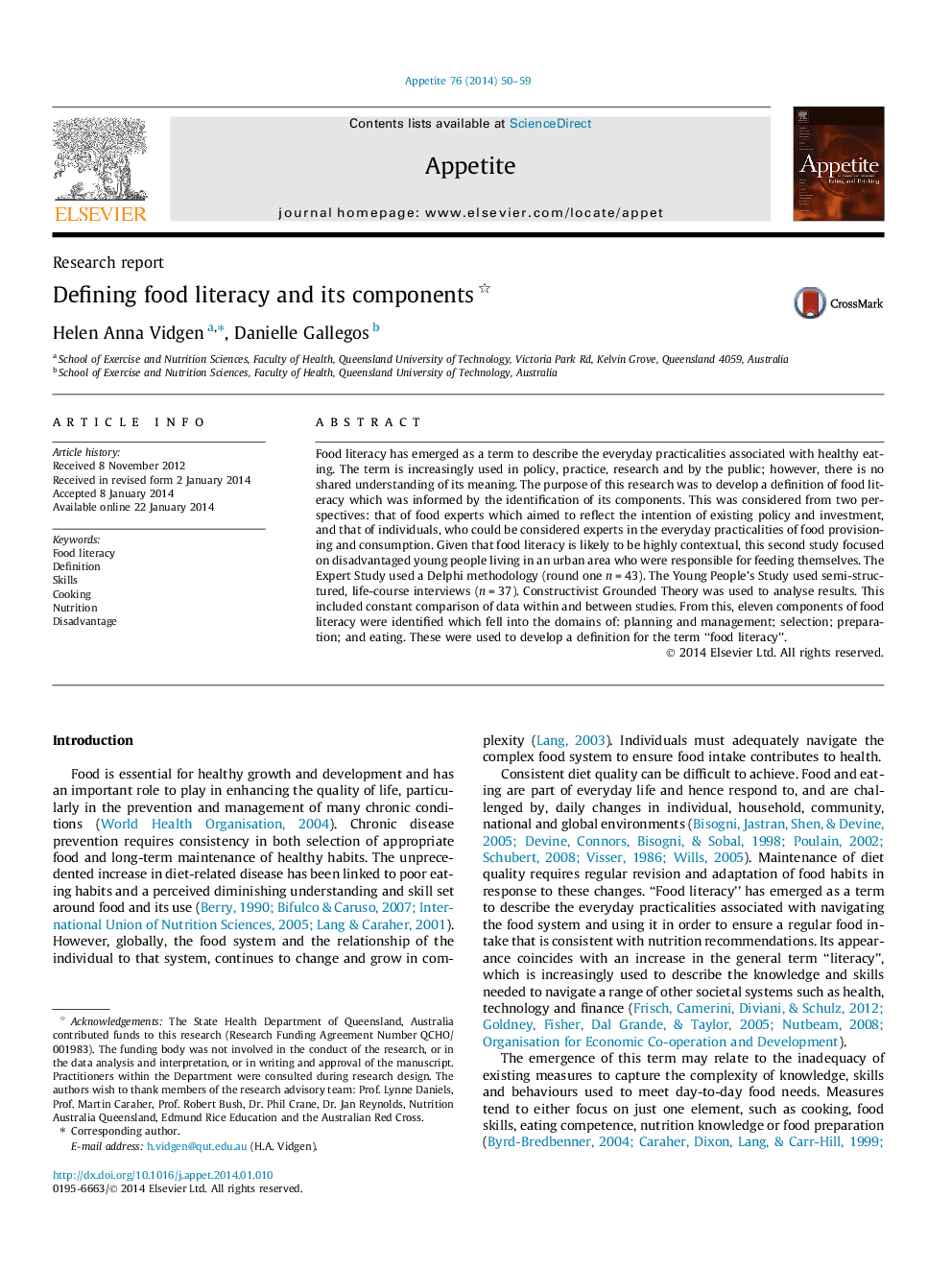| Article ID | Journal | Published Year | Pages | File Type |
|---|---|---|---|---|
| 939495 | Appetite | 2014 | 10 Pages |
•This article defines food literacy.•Eleven components of food literacy have been identified.•Components fall into the domains of: planning and management; selection; preparation; and eating.•The exact nature of each component is contextually driven which will impact on its measurement.
Food literacy has emerged as a term to describe the everyday practicalities associated with healthy eating. The term is increasingly used in policy, practice, research and by the public; however, there is no shared understanding of its meaning. The purpose of this research was to develop a definition of food literacy which was informed by the identification of its components. This was considered from two perspectives: that of food experts which aimed to reflect the intention of existing policy and investment, and that of individuals, who could be considered experts in the everyday practicalities of food provisioning and consumption. Given that food literacy is likely to be highly contextual, this second study focused on disadvantaged young people living in an urban area who were responsible for feeding themselves. The Expert Study used a Delphi methodology (round one n = 43). The Young People’s Study used semi-structured, life-course interviews (n = 37). Constructivist Grounded Theory was used to analyse results. This included constant comparison of data within and between studies. From this, eleven components of food literacy were identified which fell into the domains of: planning and management; selection; preparation; and eating. These were used to develop a definition for the term “food literacy”.
